Enjoy this article?
Most Museums Journal content is only available to members. Join the MA to get full access to the latest thinking and trends from across the sector, case studies and best practice advice.
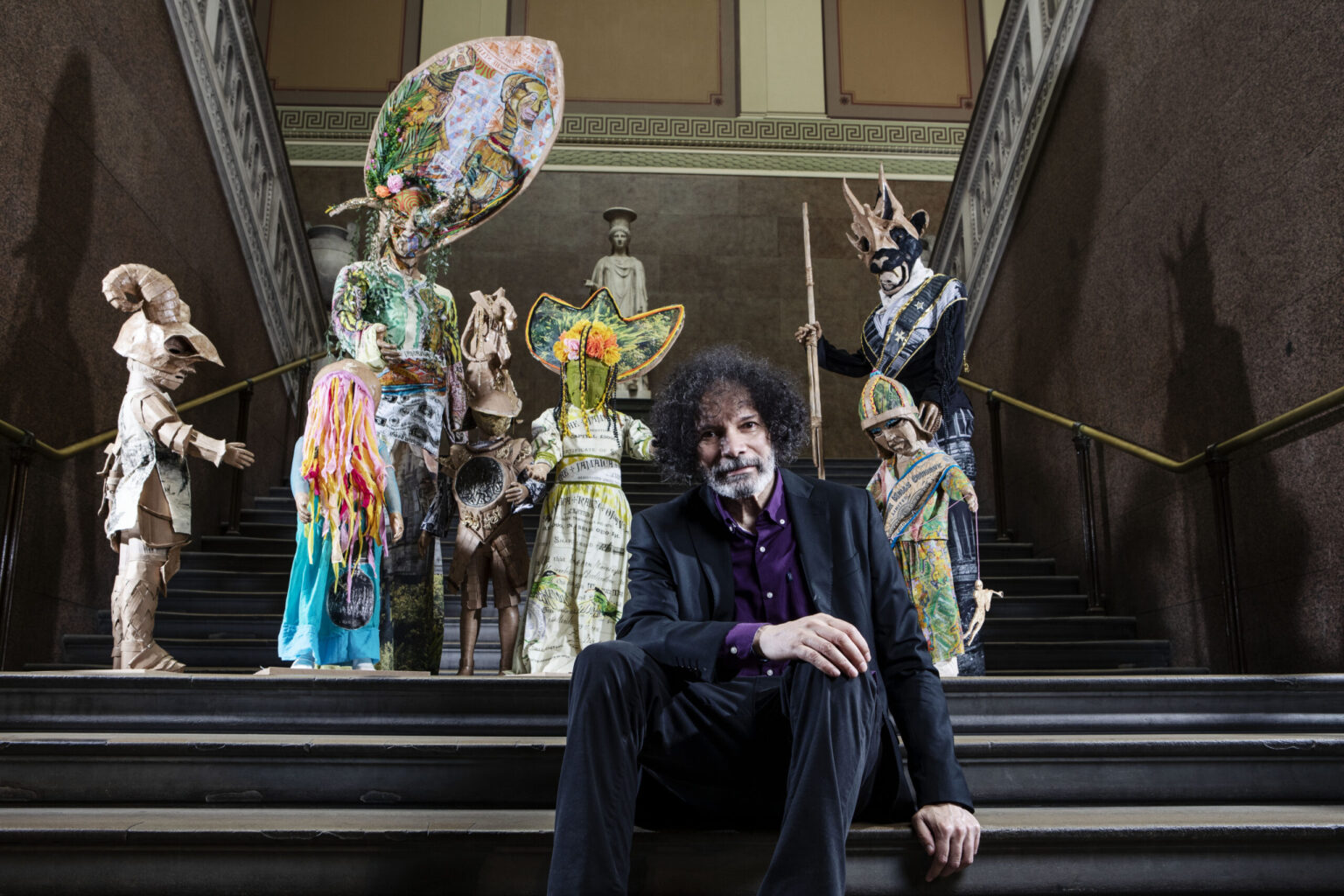
“Museums are an obsession of mine,” says Guyanese-British artist Hew Locke. “When I land in a town or city, wherever it is, the first thing I’m thinking is where’s the museum. It’s like chasing a kind of drug, you know.”
Locke has had this addiction for many years, and his experiences have fed into What Have We Here?, an exhibition he has created at the British Museum (until 9 February) that uses more than 150 objects to focus on Britain’s historical interactions with Africa, India and the Caribbean.
The artefacts are used to explore imperial power, cultural heritage and a lot more besides. Locke has been visiting the British Museum for more than 40 years and most of the items displayed are from its collections, although there is also material from the British Library, the Royal Collection, Imperial War Museum, Royal Museums Greenwich and National Museums Liverpool.
So where does this obsession with museums come from? “It’s a thing that you can’t name because, in encyclopaedic museums in particular, and even in modern or contemporary art museums, you’re looking for something that’s unusual or new. When I go to the British Museum, I want to see old favourites, but I’m also looking for things I haven’t seen before.”
Hew Locke
Hew Locke was born in Edinburgh in 1959. From 1966 to 1980 he lived in Georgetown, Guyana, an experience that plays a central part in his work. Locke is currently based in London.
In 2000, he won both a Paul Hamlyn Award and an East International Award. In 2022, he was elected a member of the Royal Academy of Arts, and received an OBE in 2023.
His work is represented in many collections including the Government Art Collection in the UK; Pérez Art Museum Miami, Tate, Arts Council England, National Trust, Metropolitan Museum of Art, New York; the Brooklyn Museum, New York; New Art Gallery Walsall; Victoria and Albert Museum; Imperial War Museum; British Museum; and the Henry Moore Institute.
Locke’s desire to find new and unusual objects meant that a deep dive into the collections of the British Museum was too good to turn down. The opportunity has given him the chance to explore many of the ideas that run through his art, such as how nations are created and how they reinvent themselves, the impact of empire on our lives and the messiness of history.
“They approached me and when that happens it means people are willing to have a serious conversation,” Locke says.
“I had to watch myself that I didn’t get seduced by the charms of the British Museum itself, because, as I said in my earliest meeting with them: ‘You guys have a reputation to preserve, but I’ve also got a reputation to preserve. So, let’s see where we can meet in the middle.’”
Locke says that negotiations with the British Museum went well, despite the organisation facing some major challenges at the time, including the theft scandal and ongoing protests over it taking sponsorship money from fossil fuel company BP.
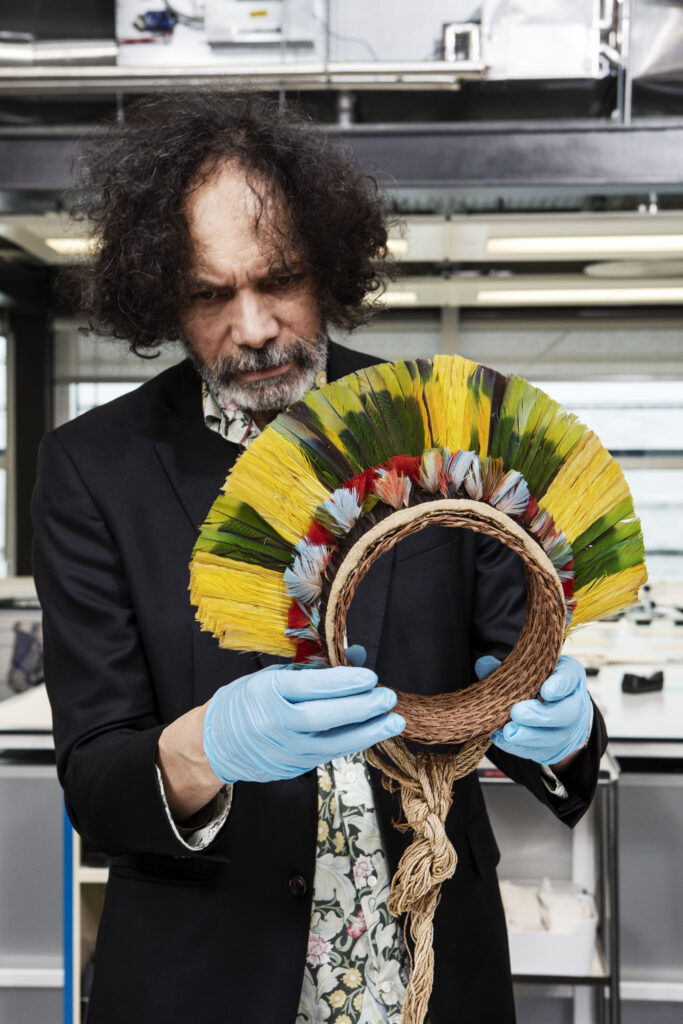
But once Locke and the museum had laid the ground rules, the interesting stuff could start – exploring the collections. This was done over two-years, with Locke supported by British Museum staff and Indra Khanna, his partner and studio curator.
For Locke, one of the key challenges was deciding what to include and what to leave out. As he says in his introduction to the exhibition, he has another 15 exhibitions in his head.“We had way too many objects for the space and that was difficult,” says Locke. “We had to ask, what can we lose and what can we not lose? We had to get quite ruthless about the whole thing. And there must be about 50 more objects than would normally fit into that space.”
The object-rich displays are enlivened by yellow text labels that sit alongside the traditional museum labels and communicate what Locke thinks about the artefacts. The tone is relaxed and conversational, reflecting the fact that the labels were created by editing down long chats about the objects that Locke had with Khanna.
The exhibition has four themes – Sovereigns and Icons of Nationhood; Trade; Conflict; and Treasure. Despite these overarching themes, the structure is loose, with visitors encouraged to explore the displays in any order that they wish. The interpretation is supported by The Watchers, a series of figures created by Locke that overlook the exhibition.
“I wanted something that was an overview, with people looking down on us, and looking down on me and judging me as much as the audience. It became like a Greek chorus,” he says. “They are there, often with outstretched hands, asking questions. What do you think of this? What is your involvement? Without that, for me, the show doesn’t work.”
Locke says that questioning tone of the exhibition is vital.
“It is trying to ask questions without letting people off the hook, and without letting myself off the hook as well,” he explains. “Because there are some beautiful objects in the show, but there are some difficult stories. Any decent exhibition, quite frankly, should ask questions, even if it is a purely historic exhibition. It’s about asking questions and trying to shed new light on the subject that you’re talking about, you know.”
The title of the exhibition, What Have We Here?, sets the questioning tone from the outset, although Locke says the process of deciding what to call it was not easy.
“Titles are agony – the older I get, the worse it gets,” he explains. “I can’t remember who came up with it. It was a temporary working title, but became the title. It’s like a child – once you’ve named the child, the child is named, and that’s that.
“But a lot of people were coming up to me when the show was announced, and saying they really liked the title. It’s open ended – it can be read one way and read another. I’m very fond of titles that have multiple readings, because the work I do has layered meanings, layers of complexity that are laid down, one on top of the other.”
There is a long history of artists engaging with the British Museum’s collections, including French sculptor Auguste Rodin in the 19th century and British sculptor Henry Moore in the 20th century. More recently, artists Grayson Perry, Edmund de Waal and Maggi Hambling have been invited in.
And across the sector, other museums have been working with artists who have been exploring institutions’ colonial histories. Current examples include the US artist Glenn Ligon at the Fitzwilliam Museum in Cambridge and Turner Prize nominee Pio Abad’s work at Oxford’s Ashmolean Museum.
But does the work of artists on the legacy of empire at museums have much impact beyond the exhibition itself?
“I would like to think it can’t now be something that can be swept under the carpet,” Locke says. “Hans Sloane [whose collection of 71,000 items was bequeathed to the British nation and helped found the British Museum] and his involvement in the slave trade is well known, and the museum was set up as a sort of icon of Britishness at a time when Britishness meant empire and superiority.
“We’re a different society today. The people working in the building are obviously very different to those working there back then, but at the same time it is still there, it hangs on.”
In the exhibition catalogue, British Museum curator Isabel Seligman refers to the roots of the museum in empire.
“Sloane’s collecting and research were both enabled by chattel slavery so it is important to reckon with the brutal histories of human trafficking that underwrote the foundation of the museum,” Seligman writes. “As well as the numerous objects that were acquired by the museum as the result of imperial activity – including the collections of officials and missionaries – objects also arrived as the result of colonial conflicts.”
For Locke, it’s significant that the museum admits that some objects were acquired through looting and colonial expansion.
“That’s quite something,” he says. “If you had told me 10 years ago that I would have seen that, I would have said no way.”
The British Museum still has lots of contentious issues to address related to its colonial history, whether that’s the future of the Parthenon marbles or how it interprets its collection for its millions of visitors. Locke does not envy those who deal with this.
“If I was offered the job tomorrow, for 500 grand a year, to be head of the British Museum, I’d say thanks for the offer, but maybe not. I have respect for people who take that on, because it’s a very difficult job.
“Contrary to my expectation, the cooperation from the museum, from its different departments, was really good. I was thinking, how is this going to go, because I’m talking about some difficult aspects of the museum, present and past. But there are objects in the show that came as direct suggestions from museum curators, and they were really interesting stories. And that’s what the show is – it’s a collection of stories from different sources.”
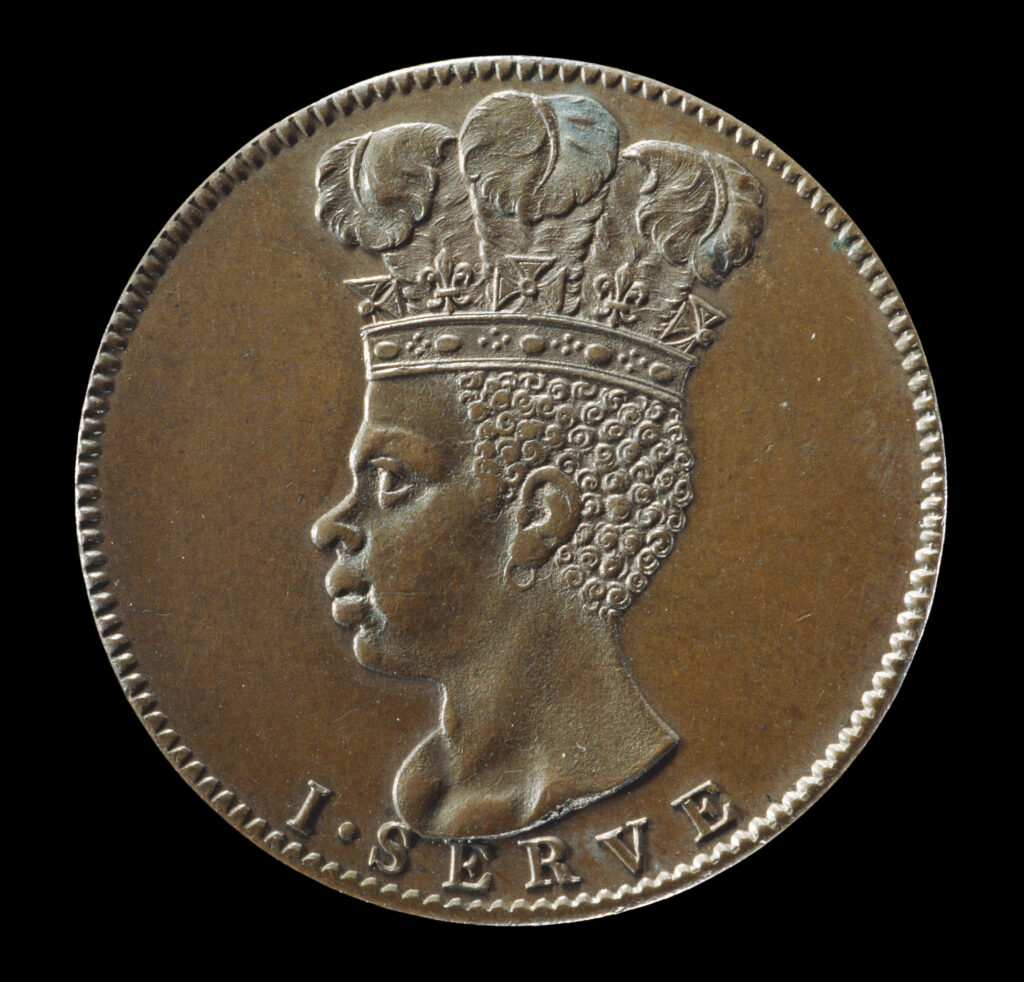
British Museum
On one side of the coin there is the head of an African man, crowned with a coronet and three ostrich feathers, the heraldic device of the Prince of Wales, along with an English translation of his motto: “I serve”.
As Locke notes: “It’s a sick joke, basically”, emphasising Black Africans’ subjection to white enslavers and the colony of Barbados’s submission to the British crown.” Locke says that, unusually for British depictions of this time, the head of the African man “is not a caricature, it’s really well modelled, that’s what makes it interesting”.
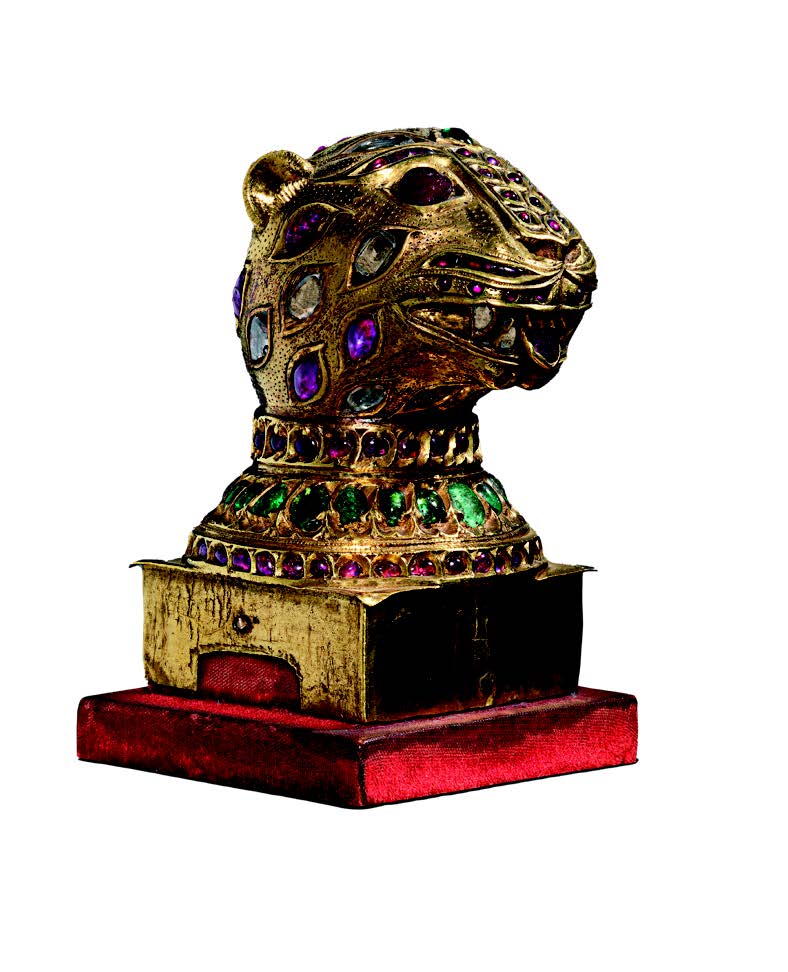
National Trust
“Tipu Sultan has always fascinated me,” says Locke. “He was mythologised even when he was still alive. He was one of the last people holding out against the East India Company. The tiger was Tipu’s symbol so he put it everywhere, on his weapons, his throne (below). The British did the same with the lion.”
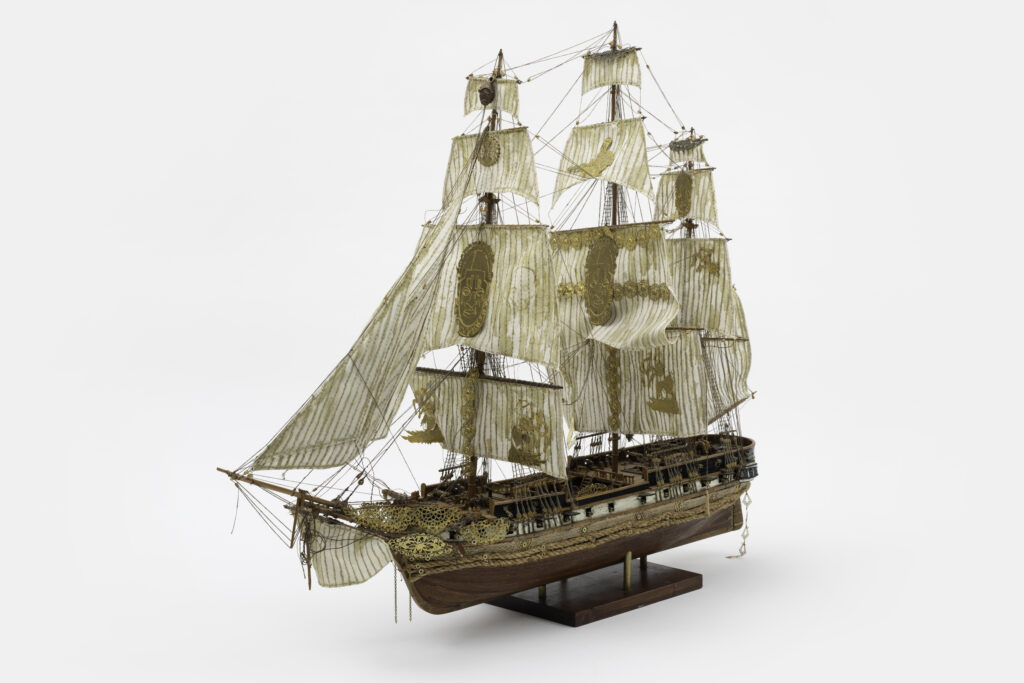
Hew Locke
“This is loosely based on the American boat, the USS Constitution,” says Locke. “It fought against the British in 1812 and defeated five ships. But it also protected American trade, so it was connected to the slave trade. It eventually ended up being involved in the civil war. It is adorned with Queen Mother Idia masks and brass gunmen as cut-outs. They’re designed to imitate gold and make the ship into something it’s not.”
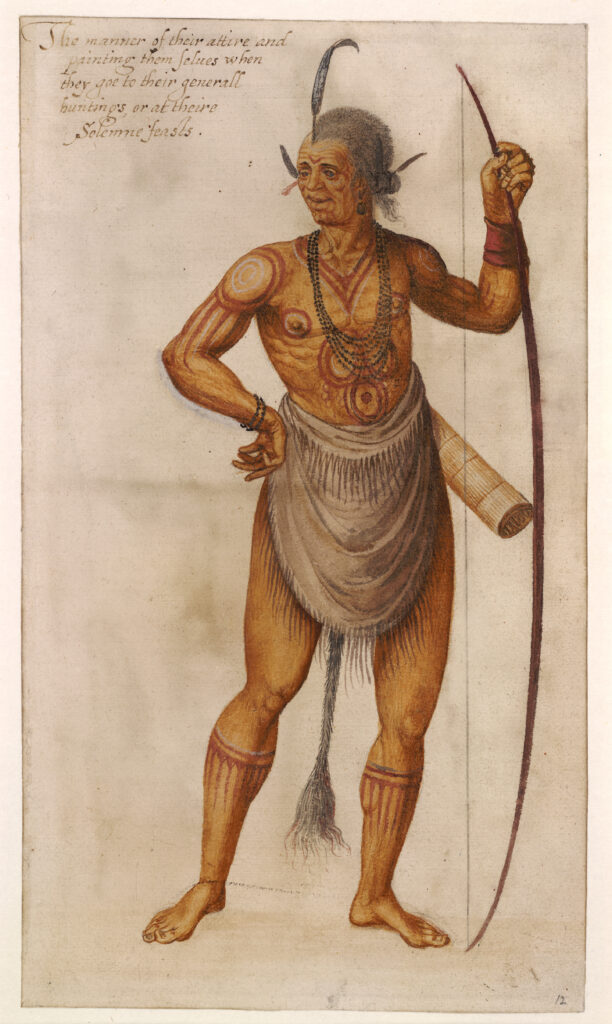
British Museum
“John White’s drawings are extraordinary,” says Locke. “They’re often reproduced and copied and have a big impact on the European imagination and the idea of Indigenous Americans. They’re filtered through a classical European mindset; the poses are taken directly from antiquity. That’s the beginning of hundreds of years of depictions of Amerindian people in that way: the ‘noble savage’. “They were also an advert for colonists – come, the natives are nice, they’re handsome, good-looking people and with plenty of land, you know, and the fish jump out of the water into your boats.”
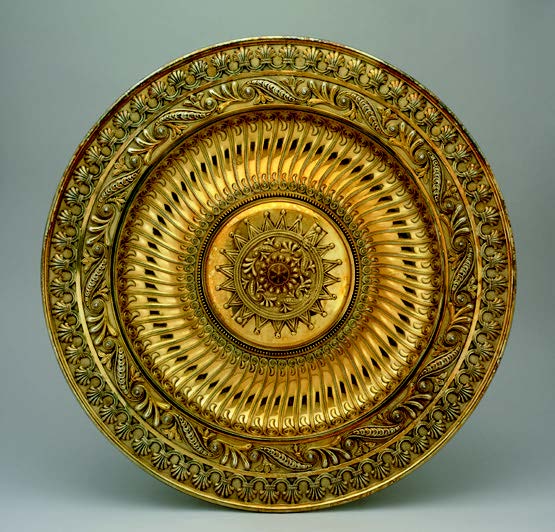
British Museum
The pendant at the centre of this dish formed part of an indemnity payment the Asantehene Kofi Karikari was forced to pay to the British government following his defeat at the end of the Third Anglo-Asante War (1873–74).
The pendant was then set in a silver-gilt dish by the Victorian jeweller Garrard & Co in 1874, with a design that echoes it. In Locke’s words: “It looks like a European thing. The original Asante object, the aesthetic of it, has been ensnared within a European design. It ignores its function completely, it’s just there as a trophy. It traps it and it kills it at the same time.”
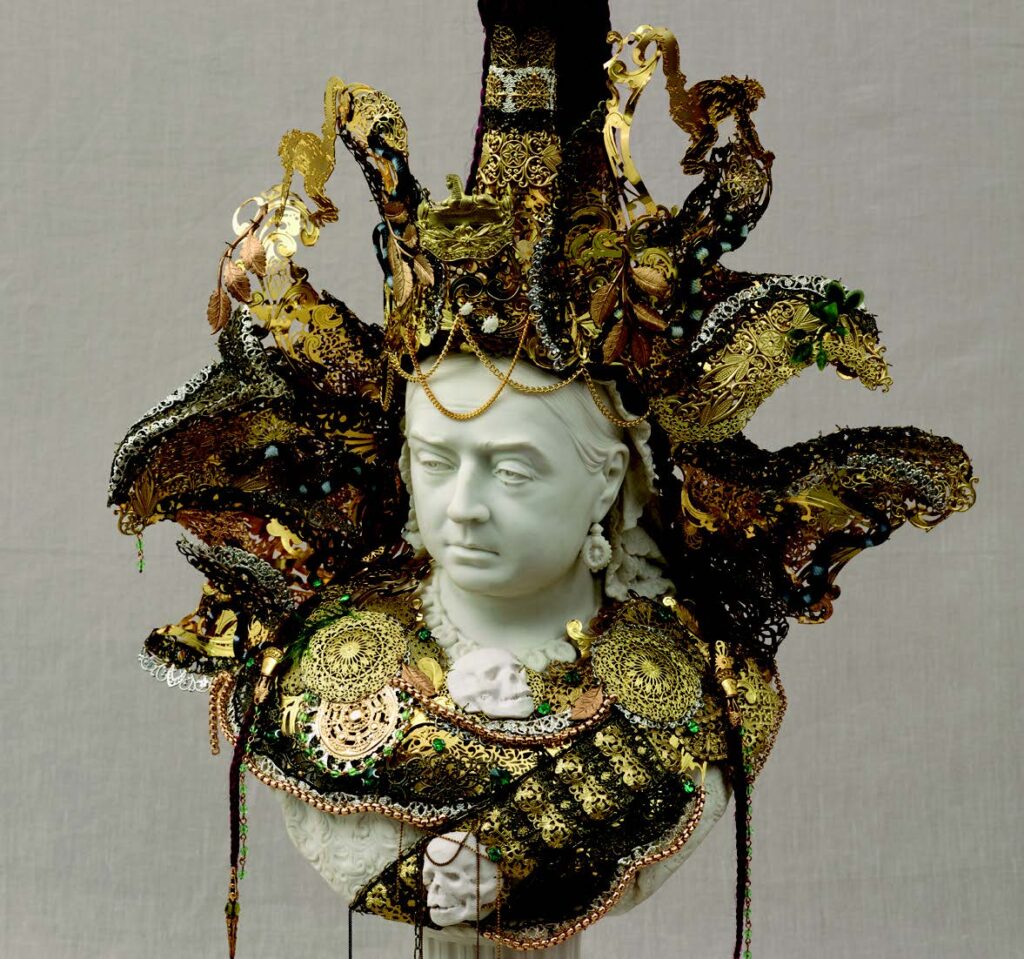
Hew Locke
This is part of Locke’s Souvenir series, in which he takes 19th-century busts of British royals and covers them in fake regalia made of things like skulls and tropical foliage, but also coins and replicas of medals from imperial conflicts. Such busts were originally mass-produced as souvenirs of the Great Exhibitions of 1851 and 1862, a celebration of empire and its rulers.
Most Museums Journal content is only available to members. Join the MA to get full access to the latest thinking and trends from across the sector, case studies and best practice advice.